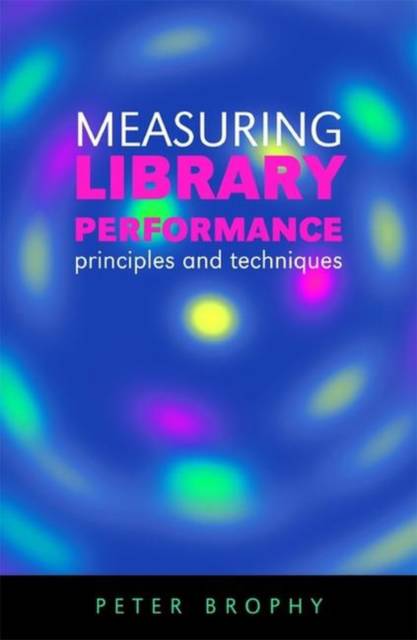
Je cadeautjes zeker op tijd in huis hebben voor de feestdagen? Kom langs in onze winkels en vind het perfecte geschenk!
- Afhalen na 1 uur in een winkel met voorraad
- Gratis thuislevering in België vanaf € 30
- Ruim aanbod met 7 miljoen producten
Je cadeautjes zeker op tijd in huis hebben voor de feestdagen? Kom langs in onze winkels en vind het perfecte geschenk!
- Afhalen na 1 uur in een winkel met voorraad
- Gratis thuislevering in België vanaf € 30
- Ruim aanbod met 7 miljoen producten
Zoeken
Omschrijving
Measuring the performance of a library's services is a crucial part of good library management, since without a firm grasp of what is actually being achieved it is impossible to move forward to improved service. The key measure is no longer size and quality of bookstock, but the impact of staff effort and resources on the population the library is intended to serve. Analysing this enables evidence of benefits to be presented, providing the ultimate justification for the service's existence. This important book is the first to provide an accessible account of current thinking and research on the evaluation of library services, both traditional and - importantly - electronic. Illustrated throughout with a range of internationally based examples across the different library sectors, it is structured to focus primarily on the intended service user (outcome and impact perspectives), then to look at service management (output and process issues) and the building blocks of services (inputs), and finally to draw together these strands by examining some of the broader frameworks for evaluation that have emerged. Each chapter features a list of key resources, and the extensive appendices offer practical guidance on data collection methods, the analysis of data and the presentation of results. The key areas addressed include: background and theoretical considerations; user satisfaction and impact on users; social and economic impact; inputs, processes and outputs; staff and infrastructure; services for all; and, standards, benchmarking and the balanced scorecard. The emphasis on both principles and techniques in this book means that it is perfect reading for busy LIS practitioners but it is also eminently suitable for LIS students and researchers trying to get to grips with this complex area.
Specificaties
Betrokkenen
- Auteur(s):
- Uitgeverij:
Inhoud
- Aantal bladzijden:
- 272
- Taal:
- Engels
- Reeks:
Eigenschappen
- Productcode (EAN):
- 9781856045933
- Verschijningsdatum:
- 20/11/2006
- Uitvoering:
- Hardcover
- Formaat:
- Genaaid
- Afmetingen:
- 163 mm x 239 mm
- Gewicht:
- 521 g

Alleen bij Standaard Boekhandel
+ 218 punten op je klantenkaart van Standaard Boekhandel
Beoordelingen
We publiceren alleen reviews die voldoen aan de voorwaarden voor reviews. Bekijk onze voorwaarden voor reviews.









